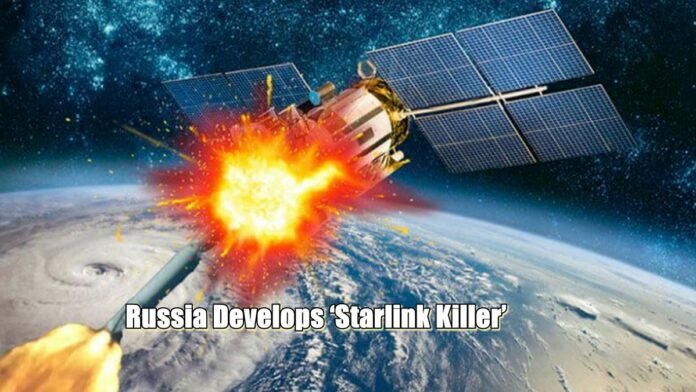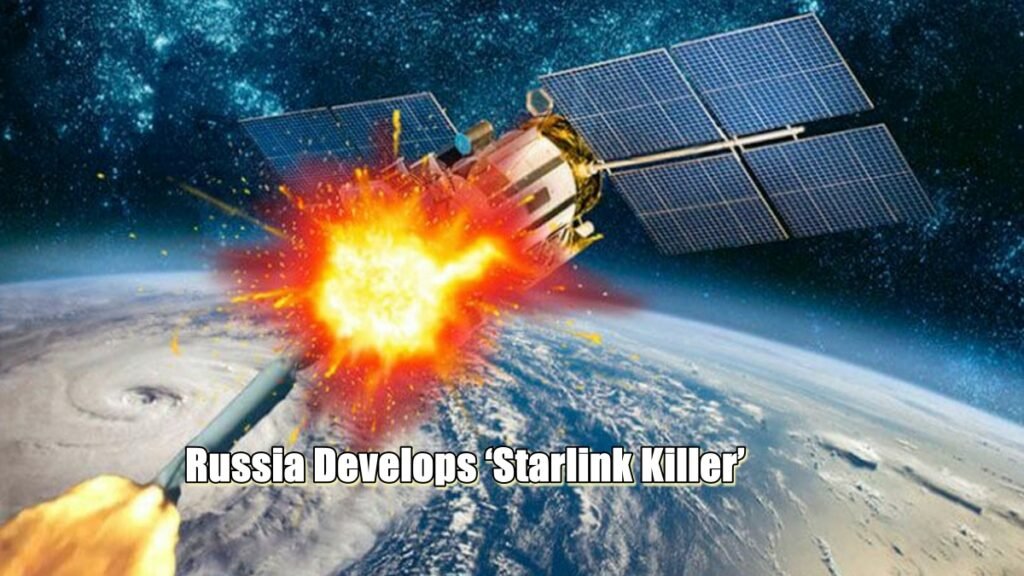
Key Highlights:
- Russia’s Countermeasure: Moscow has reportedly developed an advanced system capable of detecting and disrupting SpaceX’s Starlink satellite signals, a key technology in Ukraine’s defense strategy.
- Impact on Ukraine: Starlink has been instrumental for Ukraine’s military, aiding drone operations and communications since the start of the conflict.
- Global Implications: The development poses a significant challenge for the US and its allies, as well as for Elon Musk, whose Starlink satellites have revolutionized battlefield communications.
- Technological Arms Race: This breakthrough may escalate the tech-driven dimensions of modern warfare, sparking new challenges for global security.
New Delhi: In a development that could reshape the dynamics of the ongoing Russia-Ukraine war, Russia has reportedly developed a cutting-edge system capable of detecting and neutralizing signals from SpaceX’s Starlink satellites. This technological breakthrough, if confirmed, represents a significant setback for Ukraine’s defense efforts and a strategic concern for the United States and its allies.
Since the outbreak of the war in early 2022, Ukrainian forces have heavily relied on Starlink, a satellite internet service provided by Elon Musk’s SpaceX, to coordinate aerial and sea drone strikes on critical Russian targets. However, Russia’s new countermeasure could undermine this advantage, potentially altering the course of the conflict.
How Starlink Became Ukraine’s Lifeline
Starlink’s low-latency, high-speed internet connectivity has been a game-changer for Ukraine, especially as traditional communication infrastructure faced disruptions due to relentless Russian attacks. Ukrainian forces have utilized Starlink for:
- Drone Operations: Directing aerial and maritime drones in precision strikes against Russian assets.
- Battlefield Coordination: Ensuring seamless communication among troops in regions with no terrestrial network access.
- Crisis Communication: Supporting civilian and governmental communication during widespread outages.
Russia’s ‘Starlink Killer’: What We Know
According to reports, Russia’s newly developed system is designed to:
- Detect Starlink Signals: Identify and locate signals emitted by Starlink satellites and ground terminals.
- Disrupt Communication: Jam or neutralize these signals, rendering them ineffective for military coordination.
The system, being referred to as a “Starlink killer,” could nullify the technological edge Starlink has provided Ukraine, forcing Kyiv and its allies to explore alternative solutions.
Broader Implications: A New Battlefield in Space Technology
The development of a Starlink countermeasure signifies the growing importance of space-based assets in modern warfare. Key implications include:
- For the US and NATO: A potential challenge to the dominance of Western satellite systems in global conflicts.
- For Elon Musk and SpaceX: A test of Starlink’s resilience and the need for advancements to counter emerging threats.
- For Global Security: Escalation in the arms race for electronic warfare, with satellites becoming prime targets.
A Warning to the West?
Russia’s technological leap sends a clear signal to the West about its capabilities in space warfare. As the US and its allies continue to support Ukraine, this development underscores the importance of safeguarding satellite infrastructure. Experts predict that the weaponization of space technology could become a central theme in future conflicts.

What’s Next?
For now, the effectiveness of Russia’s so-called “Starlink killer” remains uncertain, but the mere possibility of such a system has already raised alarm bells. Ukraine may need to diversify its technological dependencies, while the US and SpaceX may accelerate efforts to enhance Starlink’s encryption and anti-jamming capabilities.
As the Russia-Ukraine conflict enters its third year, this development marks a significant shift, not only in the war itself but also in how future conflicts might be fought with space as a critical domain of battle.

















































